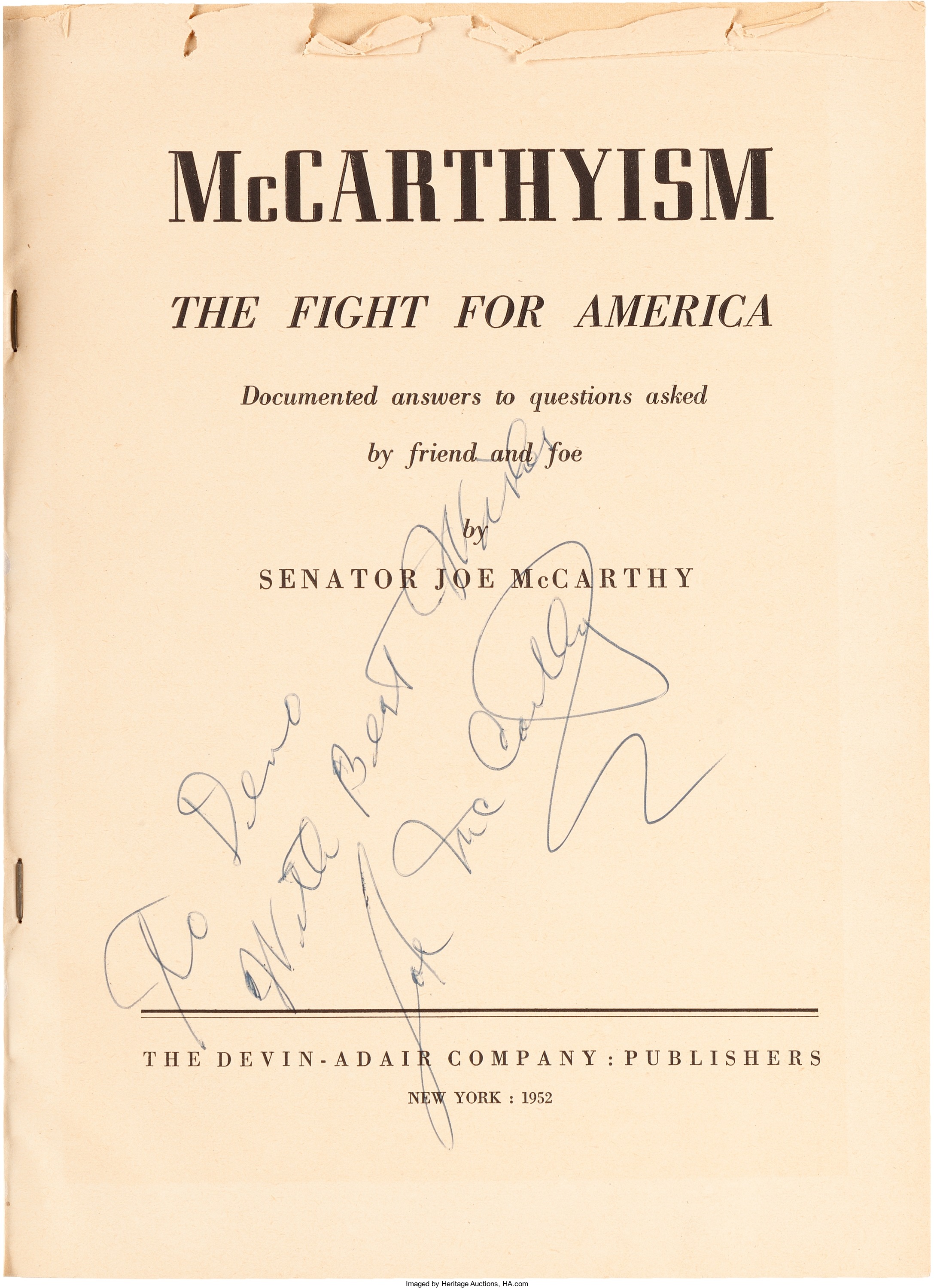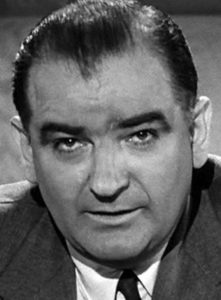
By Jim O’Neal
It’s rather interesting to compare the 1930s with the late 1940s and the transition from the era of the New Deal – when liberal ideas were ascendant, and communism, while not popular, was hardly the abhorrent demon it would become.
To Whittaker Chambers (whose 1952 book Witness became a bestseller) and many other Americans, communism was more than a system of government. It had morphed into a campaign for control of the mind and the masses.
Too many Americans seemed to have fallen victim to the “Soviet Experiment” and were infatuated by its promise of egalitarianism, while ignoring the crimes of its authoritarian leadership. Chambers was a gifted intellectual writer, but the anti-communists were to find their most vocal champion by accident. And he was a buffoon.

Senator Joseph McCarthy of Wisconsin was a hard-drinking, coarse man who later said he knew so little about his crusade that he would find it hard to distinguish Karl Marx from Groucho Marx. In a May 1950 speech to Republicans in West Virginia, he claimed to have a list of 205 communists working in the State Department. He had no list, but in subsequent speeches the number grew to thousands and then four.
But, with self-aggrandizement being his real personal goal, he soon realized he was onto something big when reporters started asking for more information. He played along and became anti-communism’s most captivating spokesman. By suggestion, innuendo and diversion, McCarthy pointed his finger at labor and liberals, at America’s elite, its prominent educational institutions, and at FDR and the New Deal.
Soon, he was not the only one ruining careers and smearing reputations. Around the country, untold numbers of civil servants, schoolteachers and scientists were driven from their jobs by witch-hunts just as vicious as the Wisconsin senator’s. The hysteria included schools banning the tale of Robin Hood for its communist themes; the Cincinnati Reds changing their name to the Redlegs; and Mickey Spillane having his tough private eye going after communist subversives instead of gangsters. Jackie Robinson was called before the House Committee on Un-American Activities to testify about communism’s influence in the black community. Even Hollywood had its own “blacklist” of writers, directors and actors.
Only when McCarthy challenged the character of President Truman’s Secretary of Defense George Marshall did his public opinion begin to sour.
There were plenty of communist agents or sympathizers in America, but it is unlikely that McCarthy or his followers ever found any. What they did was exploit the vulnerability of frightened or insecure people by simplifying complex international developments into language that tapped into cultural divisions. McCarthy helped them find someone to blame.
Fortunately, it didn’t last long after the Senate censored him … twice. He died a hopeless alcoholic at age 48.
The 2005 movie Good Night, and Good Luck with David Strathairn and George Clooney does a terrific job of capturing the era of McCarthyism through the lens of TV journalist Edward R. Murrow’s experience. It’s among my top 20 favorite movies.
 Intelligent Collector blogger JIM O’NEAL is an avid collector and history buff. He is president and CEO of Frito-Lay International [retired] and earlier served as chairman and CEO of PepsiCo Restaurants International [KFC Pizza Hut and Taco Bell].
Intelligent Collector blogger JIM O’NEAL is an avid collector and history buff. He is president and CEO of Frito-Lay International [retired] and earlier served as chairman and CEO of PepsiCo Restaurants International [KFC Pizza Hut and Taco Bell].
